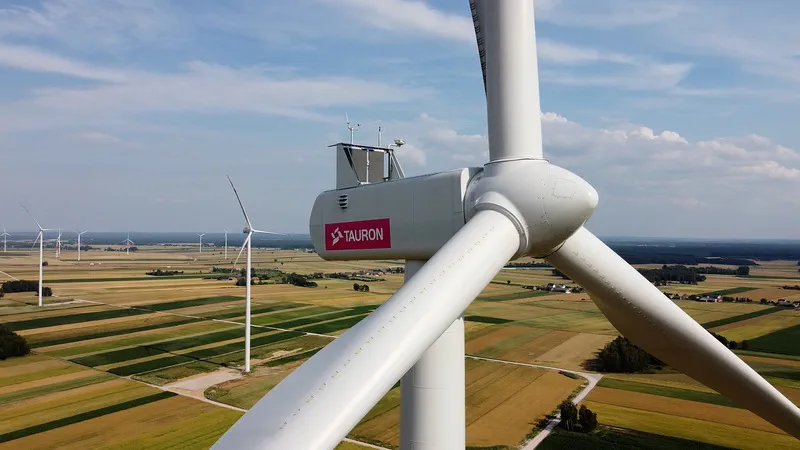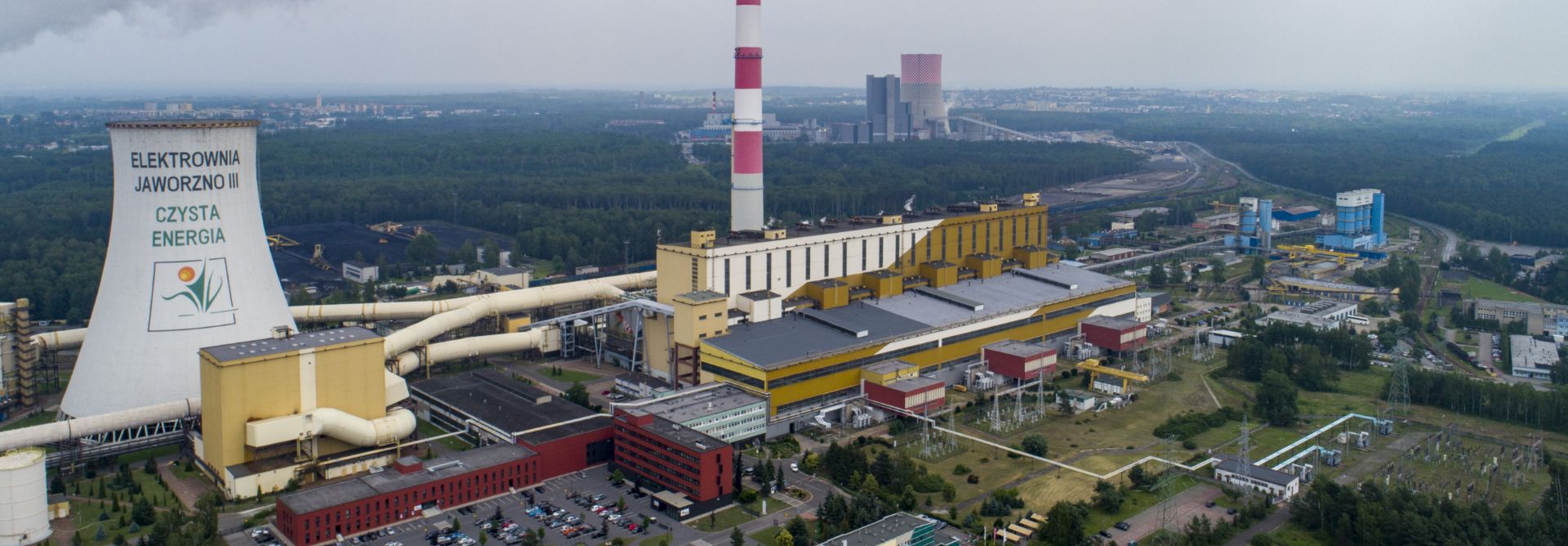The development of the Group’s business follows European and global trends, and the coming years are going to mark a time of transition towards decarbonisation of the Group. The use of 120 MW coal-fired generation units has come to an end in 2021. TAURON Wytwarzanie, the production subsidiary which provides up to 2.5 GW of available capacity chiefly using 200 MW class units, is going to be handed over to the Polish National Energy Security Agency (NABE). The result will be no hard coal generation performed in the Group. Coal fuel will only be used in CHP plants, with expected decarbonisation by 2030. The development of new low- and zero-carbon sources has already been planned for. Their share in the Group’s installed capacity will reach 80% between 2025 and 2030.
The balance sheet value of all TAURON Group assets is over PLN 45 billion (including property, plant and equipment of PLN 35 billion). Overall, the assets are very diversified as a result of the specificity of the covered segments and the significant differences in the ageing of both individual pieces as well as entire production plants.

In 2022, the total installed capacity of renewable energy sources was 659 MWe. In the case of RES commissioned only in 2022, the installed capacity was 44 MWe. Those sources were:
- 30 MWe wind farm based in Piotrków
- 6 MW wind farm based in Majewo
- 8 MWe PV farm based in Choszczno (phase 2)
The development of new RES projects has also been initiated in 2022, totalling 224 MWe. The new projects are:
- 37.14 MWe PV farm based in Mysłowice (facility 2)
- 45.6 MWe PV farm based in Proszówek (phase 1)
- 58.5 MWe wind farm based in Mierzyn
- 30 MWe wind farm based in Warblewo
- 33 MWe wind farm based in Gamów
- 19.6 MWe wind farm based in Nowa Brzeźnica
The largest impact on TAURON Group’s financial performance has come from the Distribution area, which also incurs the largest capital expenditures of approx. PLN 2 billion annually. The changing market situation, particularly the development of RES, including the so-called prosumer energy sources, has a great impact on the need to modernise and expand as well as adapt the existing network infrastructure. In addition, rising customer expectations and quality requirements imposed by the Polish Energy Regulatory Authority (URE) are driving further improvements in quality and reliability of the supply of electric energy. TAURON Dystrybucja, the distribution subsidiary, is implementing a cable network programme to increase the share of such networks, leading to better quality markers, security of supply and weather resistance.
-
2-6
Key data on TAURON Group production assets in 2020-2022
| Key information | 2022* | 2021 | 2020 |
|---|---|---|---|
| Hard coal mines | 3 | 3 | 3 |
| Coal-fired power plants (total units) | 6 | 6 | 6 |
| Coal-fired power plants (installed capacity) | 4.1 GWe; 0.8 GWt | 5.2 GWe; 1.1 GWt | 5.2 GWe; 1.3 GWt |
| Cogeneration plants (total units) | 4 | 4 | 4 |
| Cogeneration plants (installed capacity) | 0.35 GWe; 1.1 GWt | 0.35 GWe; 1.1 GWt | 0.35 GWe; 1.2 GWt |
| Own district heating networks – TAURON Ciepło (length) | 904 km | 896 km | 888 km |
| Heat sales | 13.64 PJ | 15.08 PJ | 11.6 PJ |
| Hydroelectric power plants (total units) | 34 | 34 | 34 |
| Hydroelectric power plants (installed capacity) | 133 MW | 133 MW | 133 MW |
| Wind power plants (total units) | 11 | 9 | 9 |
| Wind power plants (installed capacity) | 417 MW | 381 MW | 381 MW |
| Photovoltaic power plants (total units) | 3 | 2 | |
| Photovoltaic power plants (installed capacity) | 19 MW | 11 MW | |
| Cogeneration engines – de-methanation gas (total units) | 4 | 4 | |
| Cogeneration engines – de-methanation gas (installed capacity) | 10.8 MWe | 10.8 MWe | |
| Electricity distribution networks (length) | 246 500 km | 245 800 km | 241 600 km |
| Transformers (distribution) | 59 800 | 60 800 | 60 900 |
| MV/LV transformer stations and MV network switchgear | 62 100 | 61 600 | 59 100 |
| HV/MV substations | 497 | 495 | 493 |
| Capital expenditures (PLN million)** | 3 962 | 2 932 | 4 039 |
| Depreciation (PLN million)** | 2 216 | 2 101 | 1 954 |
** from continuing and discontinued operations
Production assets management
TAURON Group manages its production assets through efficient operation as well as investments that develop and upgrade facilities, including:
- connection of new consumers (and generators) to the distribution network, network development and upgrading to improve the quality and reliability of the power supply to consumers
- new RES capacity and efficiency improvements of existing RES assets
- development and upgrading of the district heating network
- pursuing new low- and zero-carbon sources of heat
-
301-1
Delivered impact 2020-2022 impact of TAURON Group’s measures in the area of production assets management
| Area of impact | 2022 | 2021 | 2020 |
|---|---|---|---|
| Commercial coal production in segments: coal middlings, medium, coarse, eco-pea | 5.01 m Mg | 5.15 m Mg | 4.54 m Mg |
| Net electricity production | 14.16 TWh | 14.3 TWh | 11.4 TWh |
| including RES generation | 1.48 TWh | 1.7 TWh | 2.0 TWh |
| Heat distribution | 8.62 PJ | 9.42 PJ | 8.44 PJ |
| Heat generation | 10.58 PJ | 12.00 PJ | 11.63 PJ |
| Electricity distribution | 53.68 TWh | 53.97 TWh | 50.26 TWh |
Production assets in the context of other assets and capital
The production assets affect revenue generation. TAURON Group’s coal mines were divested in 2022 and the process of selling conventional (coal) generation assets should be completed by mid 2023. Once finalised it will cause the production assets to be operated mainly in the regulated areas: electricity distribution, heat generation and heat distribution, ensuring a further stream of stable revenue. Such predictable revenue ensured strengthens TAURON Group’s position as a stable employer and allows financing its ambitious investment programme, while reducing the negative impact on the climate and the environment. The investment programme will lead to the decarbonisation in the area of district heating, with around 3.7 GW of renewable capacity by 2030 that will yield a significant change in the context of the natural resources.
The use of cutting-edge technology and technical solutions improves and develops new competences in terms of intellectual property, further contributing to the growth of human capital. It is likewise significant that also local communities can be strengthened thanks to the engagement in social initiatives and the development of affirmative relations both inside the organisation as well as with the surroundings.

